Text
Best Travel Gear (My Ultimate Travel Packing List)
Curious about the travel gear I bring with me on my international adventures? I’ve put together this gear page to share my long-term travel packing list. Obviously, I recommend traveling with high-quality, lightweight & durable stuff.
The travel gear I use may not work for everyone. I carry extra photography equipment to maintain this travel blog, along with camping equipment for trekking up mountains, hitchhiking long distance, or exploring rainforests on my own.
All travelers have different tastes & requirements while on the road. The following gear list is just what I’ve found works best for MY particular “adventure” travel style.
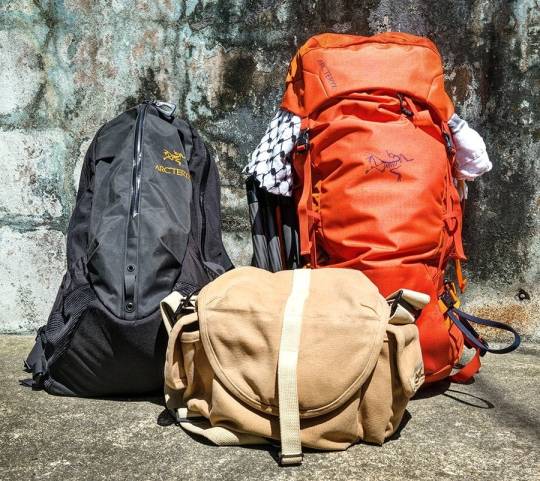
While I often travel on an extreme budget, my gear can be expensive. I want it to be functional, multi-purpose, comfortable, and very tough. I don’t want to keep replacing worn-out equipment every few months while abroad — plus I have a slight obsession with keeping travel gear as lightweight as possible!
“He who would travel happily must travel light.”
~ Antoine de St. Exupery
(One of my favorite quotes about travel!)
Top Travel Gear List For 2019
Travel Luggage: Rolling Bag VS Backpack
Ah, the eternal question. Travel backpack, suitcase, or rolling duffel? This is going to come down to personal preference — and what kind of traveling you plan to do.
If you’re riding chicken-buses through Central America or hitchhiking around Africa, you’ll probably want a travel-friendly backpack. If you spend a lot of time in cities or fly frequently, you might prefer a rolling duffel or suitcase.
I started vagabonding around the world with a backpack, but my travel style has changed over the years, where I now find a rolling duffel bag more convenient for most things.
Mainly, due to carrying a lot more photography gear for my work on this travel blog.
My Main Travel Bags
I currently travel with 3 different bags. A rolling duffel as my main bag, a backpack for mountain trekking or wilderness trips, and a carry-on camera backpack.
I usually only need to check one bag, the rolling duffel. The hiking backpack can lie-flat inside it. For bigger trips that require more technical gear (like winter camping), I’ll check both.

North Face Rolling Thunder
My current favorite travel bag with plenty of room, heavy-duty lockable zippers and a waterproof shell. A seperate compartment for hiking boots, and big wheels for dirt roads & cobblestones.

Gregory Zulu 55 Backpack
This lightweight, super comfortable overnight trekking & travel backpack includes full front-zipper access to all my gear. It can lie flat in my roller bag if I don’t need to check both.

Lowepro Whistler Camera Bag
My amazing carry-on camera & laptop backpack. I use this for day hikes with my camera gear, but it has room for things like snacks, water, jacket, full-size tripod, snowboard, ice-axe, etc.
READ MORE: How To Choose The Perfect Travel Backpack
Basic Travel Gear
This is my basic, standard travel gear that goes with me on every trip. From items that make flights more comfortable to gear that helps me stay organized while traveling.

Filtered Water Bottle

Packing Cubes

Multi-Tool
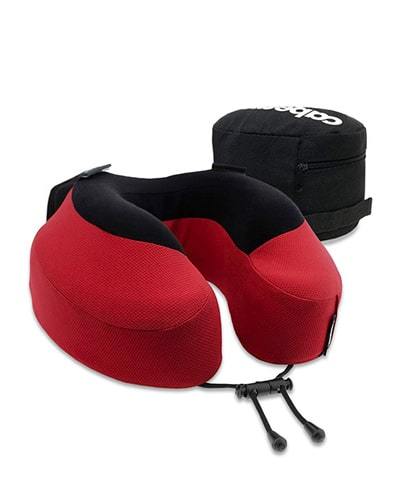
Travel Neck Pillow

Shemagh Scarf

Hearos Earplugs
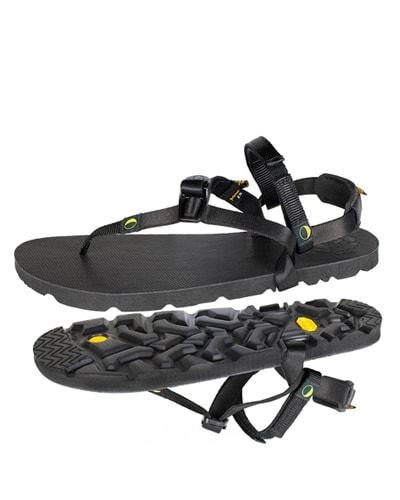
Minimalist Sandals

Luggage Locks
READ MORE: Best Gifts For Travelers In 2019
Backpacking & Camping Gear
As an adventure addict, I do a lot of overnight backpacking, trekking, and camping when I travel. So I pack some specialized outdoor gear for these types of journeys, much of it pretty high-end (super lightweight & durable).

Nemo Hornet 2P Tent

Sleeping Bag
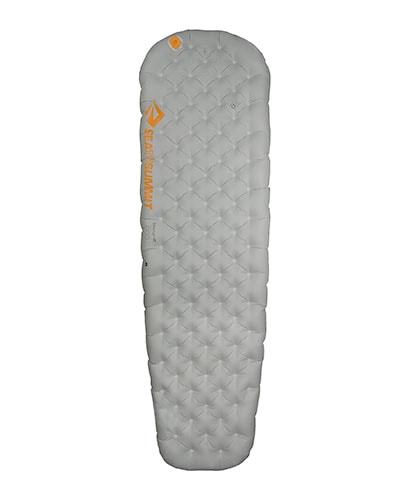
Ultralight Sleeping Pad

Camp Stove
READ MORE: My Complete Backpacking Gear Checklist
Travel Clothing & Apparel
You don’t need a huge wardrobe to travel. Here’s some of the clothing I pack when traveling around the world. I try to buy stuff that’s lightweight and wrinkle resistant. As for how much? I generally pack: 2 pairs of pants, 1 pair of shorts, 5 t-shirts, 2 nicer shirts, 2 sweatshirts/sweaters, 5 pairs of underwear, 5 pairs of socks, and 1 swimsuit.

Travel Blazer

Travel Pants

Travel Shorts

Boxer Briefs

Button Shirts
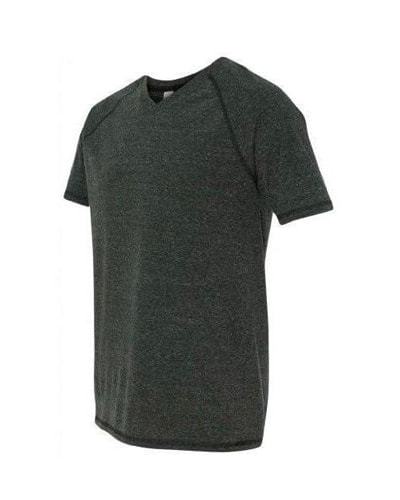
Comfy T-Shirts

Travel Shoes

Comfy Socks
READ MORE: How I Do Laundry While Traveling
Tech Gadgets For Travelers
I would not be able to produce a travel blog of this caliber without some computer equipment. Other electronics are not absolutely needed, but they improve my quality of life on the road enough to be worth the weight.

Universal Travel Plug
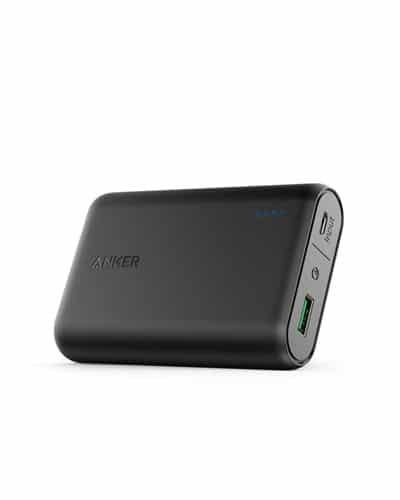
USB Power Pack

Kindle Paperwhite

Noise-Canceling Headphones
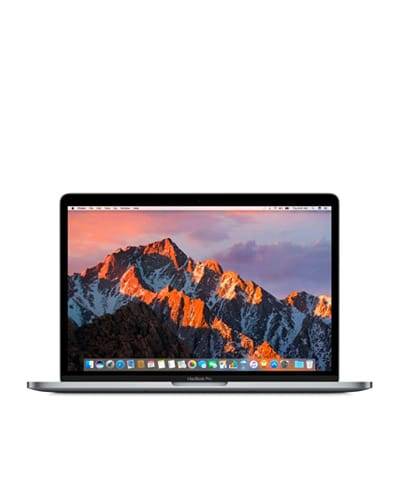
Macbook Pro 13
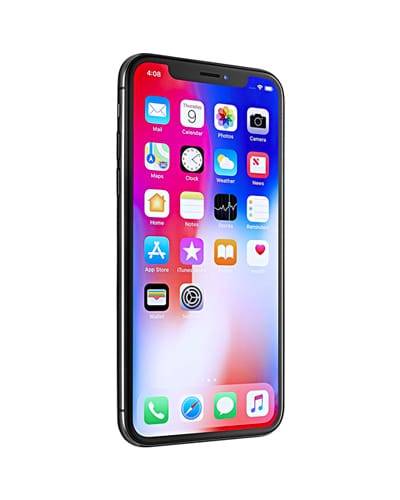
iPhone

Portable Hard Drive

Magic Mouse
My Travel Photography Gear
For the photographers out there, this is the camera equipment I use for adventure travel photography around the world. While I shoot images for this blog, I also sell images to magazines, brands, and national tourism boards. I carry more camera equipment than the average traveler because it’s part of my business.
➜ See A Detailed List Of My Camera Gear Here
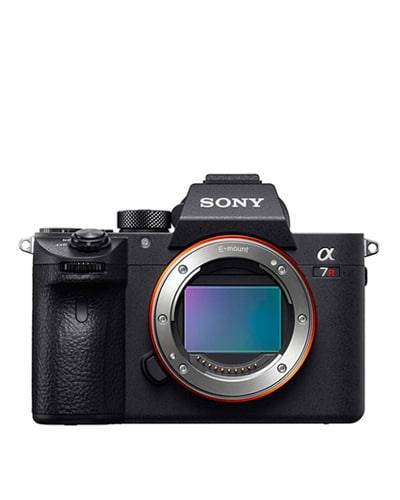
Sony A7R III

Sony A6500

Mavic 2 Pro

GoPro 7
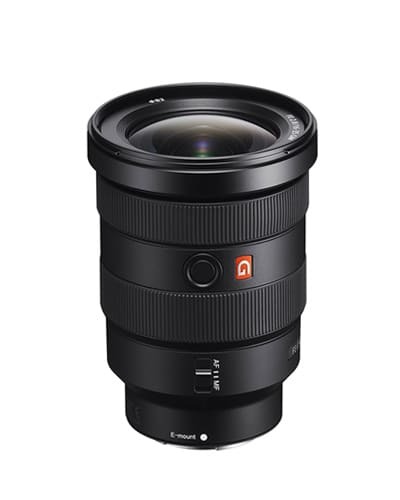
16-35mm 2.8
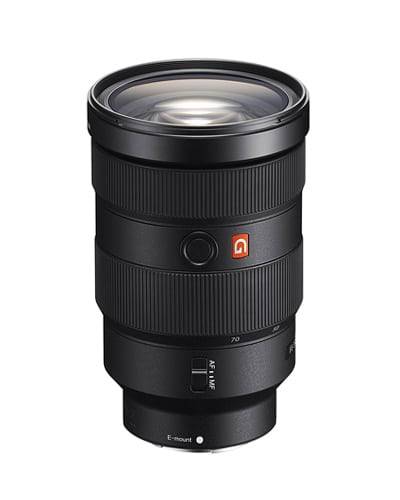
24-70mm 2.8

Travel Tripod

Microphone

Camera Clip

Camera Strap
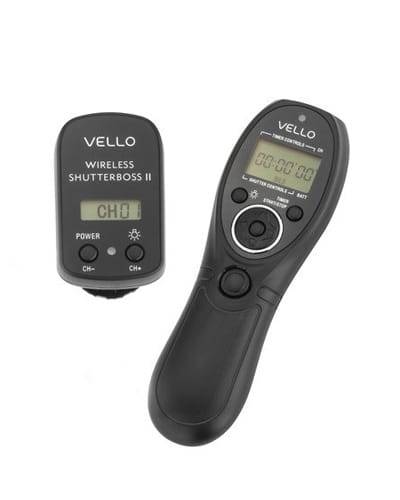
Intervalometer

Camera Backpack
READ MORE: Best Travel Cameras For Different Budgets
Why Not Travel Carry-On Only?
I’ve traveled carry-on only before, and still do occasionally if it’s a short weekend trip. However as I’ve collected more camera gear for the travel photography side of my business, I was forced to check a bag again in order to fill my carry-on with camera gear.
And you know what? After 9 years of regular travel, the airlines have only lost my checked-bag 4 times. In all but one of those cases my bag showed up the next day — it was not a big problem. Losing a bag for a day is not the crisis some travelers pretend it is.
Only once did it take a week to get my bag back. While this particular situation certainly sucked, having this happen once in 9 years, with all the flying I do, does not make it a frequent occurrence.
Checking a bag is not the end of the world… and odds are very high it will be waiting for you at luggage claim.
This is a post from The Expert Vagabond adventure blog.
from Tips For Traveling https://expertvagabond.com/travel-gear-guide/
0 notes
Text
Mobal Sim Card Review for Japan for 2019
On our recent trip to Japan we decided to use two Mobal sim cards (voice+data and data only) while we were travelling. We also...
The post Mobal Sim Card Review for Japan for 2019 appeared first on Pretraveller.
from Tips For Traveling https://pretraveller.com/mobal-sim-card-review/
0 notes
Text
Best Prepaid Data Sim Card in Japan for Tourists in 2019
A Japan travel sim card is a great option for easy and convenient access to the internet without going through the hassle of finding...
The post Best Prepaid Data Sim Card in Japan for Tourists in 2019 appeared first on Pretraveller.
from Tips For Traveling https://pretraveller.com/best-prepaid-data-sim-card-in-japan-for-tourists/
0 notes
Text
How to Skip the Queue with a Universal Studios Japan Express Pass
Universal Studios Japan doesn’t have a free line-skipping system such as the Fast Pass at Tokyo Disneyland and DisneySea. Instead, USJ has various Express...
The post How to Skip the Queue with a Universal Studios Japan Express Pass appeared first on Pretraveller.
from Tips For Traveling https://pretraveller.com/usj-express-pass/
0 notes
Text
How to Buy Universal Studios Japan Tickets and Express Passes in 2019
We were poorly organised when we visited Universal Studios Japan in Osaka. While I had done a lot of research on most of our...
The post How to Buy Universal Studios Japan Tickets and Express Passes in 2019 appeared first on Pretraveller.
from Tips For Traveling https://pretraveller.com/universal-studios-japan-usj-osaka-tickets-express-pass/
0 notes
Text
Our Ginormous Guide to the Wizarding World of Harry Potter Japan 2019
If you are visiting Universal Studios Japan Harry Potter fans of all types (die-hard or casual) must visit the Wizarding World of Harry Potter....
The post Our Ginormous Guide to the Wizarding World of Harry Potter Japan 2019 appeared first on Pretraveller.
from Tips For Traveling https://pretraveller.com/harry-potter-japan-universal-studios-japan/
0 notes
Text
Best Places to See Cherry Blossoms in Japan
One of the most popular time for people to visit Japan is during spring to see the cherry blossoms or Sakura. Across Japan there...
The post Best Places to See Cherry Blossoms in Japan appeared first on Pretraveller.
from Tips For Traveling https://pretraveller.com/best-places-to-see-cherry-blossoms-in-japan/
0 notes
Text
Best Hotels Near Universal Studios Osaka
Visiting Universal Studios Japan can be a massive day out, and as a result it makes a lot of sense to book accommodation which...
The post Best Hotels Near Universal Studios Osaka appeared first on Pretraveller.
from Tips For Traveling https://pretraveller.com/hotels-near-universal-studios-japan-usj-in-osaka/
0 notes
Text
Best Hotels Near Universal Studios Osaka
Visiting Universal Studios Japan can be a massive day out, and as a result it makes a lot of sense to book accommodation which...
The post Best Hotels Near Universal Studios Osaka appeared first on Pretraveller.
from Tips For Traveling https://pretraveller.com/hotels-near-universal-studios-japan-usj-in-osaka/
0 notes
Text
My Backpacking Gear Checklist (How To Pack For A Trek)
My Lightweight Backpacking Gear Setup
Outdoor Gear Guide
Learn how to pack for a successful overnight backpacking or trekking adventure with lightweight gear essentials like a tent, stove, clothing, and more. My ultimate backpacking checklist!
As you’re about to see with my ultimate backpacking checklist here — I’m a total gear nerd!
From backpacking in Greenland, trekking in Afghanistan, or hill-walking in Ireland, I’m always searching for the lightest and most comfortable hiking & camping equipment. Updating my gear guides on a regular basis.
Fortunately, you get to benefit from my expensive hobby of collecting and testing outdoor backpacking gear by learning from my experiences using it during adventures around the world.
At the end of this guide, you’ll find a FREE printable backpacking checklist that you can download and use for your next trip!
Favorite Backpacking Gear For 2019
Backpacking VS Trekking
Lightweight Backpacking Checklist
Choosing A Backpack
Color-Coded Stuff Sacks
Tents & Overnight Shelters
Warm Sleeping Bag
Comfortable Sleeping Pad
Backpacker Kitchen
Hiking & Trekking Clothing
Backpacking Outerwear
Hiking Shoes Or Boots
Backpacking Food
Personal Hygiene Items
The Backpacking Essentials
My Favorite Luxury Items
Backpacking With Camera Gear
Why Listen To Me?
Experience! I’ve been backpacking & trekking around the world for the past 9 years through mountains, deserts, forests, jungles and National Parks in multiple countries. This guide is also completely independent.
Backpacking VS Trekking
First off, I want to define the difference between backpacking, trekking, and hiking. These words are sometimes used interchangeably — but they can also have different meanings depending on who you ask.
Backpacking is a hiking trip that includes overnight camping. Packing everything you need to be self-sufficient in the wilderness on your back. Like my 10-day solo backpacking trip on Greenland’s Arctic Circle Trail.
Trekking is hiking long-distance, for days or weeks at a time. You might pack everything in yourself, but more likely you’ll have a guide and pack animal or human porter to help you. You may or may not need to bring your own shelter. Like my trek in the mountains of Afghanistan with a local guide & pack horse.
Hiking is just walking on a wilderness trail through the mountains, forest, desert, or even the countryside. Generally, this is used to define day hikes that don’t require an overnight stay. Like my day hike up Ireland’s highest mountain.
I’m going to focus on a typical 2-5 day backpacking trip, packing in your own food, water, and camping gear. But much of this will also work as a trekking packing list.
Lightweight Backpacking Checklist
The Gear I Pack for Overnight Trekking
Backpacking checklists & packing lists can be a controversial subject. Everyone has an opinion about what’s the best hiking and camping gear to bring on a trip!
You have your traditional backpackers, lightweight backpackers, and even ultra light thru-hikers who all do things differently.
For this backpacking gear checklist, I’m sharing my personal setup, which is considered “lightweight” with a 20 lbs (9 kg) base-weight.
Backpack base-weight is the weight of all your gear except for food, water, and fuel — which varies depending on the length & location of your trip.
Choosing A Hiking Backpack
Great Backpacks for Hiking & Camping
Overnight Backpacks
For multi-day hiking & backpacking, where you’ll need to carry everything in on your back, I recommend choosing a 40-65 liter backpack that will hold your tent, sleeping bag, food, water, and other backpacking essentials.
Gregory Mountain Zulu 55 – This is the backpack I take with me on most 2-3 day trips. It’s super lightweight (3.5 lbs), comfortable, and well designed. The front-loading pannel makes it a great travel backpack too.
Arcteryx Bora 50 – For long-distance treks with the potential for more extreme weather, or more weight (like winter camping), I prefer this for superior weather resistance and a more comfortable hip-belt.
Day Hiking Backpacks
You may or may not want a day pack — it depends on the type of trip. Other than a traditional day-hike that doesn’t require camping, you might also want a day pack to wear during a guided trek, for easy access to certain items while the rest of your gear is with a porter or pack animal.
I do not bring a day pack on independent overnight hiking & camping trips.
Osprey Stratos 24
Arcteryx Alpha AR 35
Waterproofing Your Pack
What if it rains during your backpacking trip? Most hikers bring a waterproof rain cover for their backpack, and I used to as well. Until I discovered the magic of using a trash compactor bag (or two) to line the INSIDE of my pack.
Why? First of all, they are much cheaper. Second, they are multi-use items. Finally, they are much more effective. Sure, the outside of your backpack will still get wet, but everything inside will be bone-dry. Even if you fall into a river.
Color-Coded Stuff Sacks
To keep your backpack organized during your hiking adventure, I recommend using a few lightweight stuff sacks and/or packing cubes, in different colors, so it’s easy to grab important gear quickly.
Sea To Summit Ultra-Sil Stuff Sack – I use a few of these in different sizes & colors for my spare clothing, cold weather gear, and more.
Eagle Creek Specter Sacks – I also have a few of these for smaller items, like my repair kit and to store my (occasionally damp) microfiber towel.
Tents & Overnight Shelters
My Nemo Hornet 2 Person Tent
If you plan to sleep outside in the wilderness, you’re going to need a quality shelter to pack with you. Traditionally this would mean using a tent, but a camping hammock or bivy bag are other possible options. While I own and use all three types of shelters, generally I think most people should start with a tent.
Lightweight Tents
This is one of your most important pieces of backpacking gear. You want to find a tent that is a good combination of lightweight, spacious, waterproof, and easy to set up. It’s basically where you’ll be living during your trip!
Nemo Equipment Hornet 2P – My current favorite lightweight backpacking tent if I’m on my own. Perfect for one person plus some gear, but a bit tight with two people. I use this 75% of the time.
Big Agnes Copper Spur UL2 – Another great tent I own. Slightly more room if I’m going to be sharing it with someone else.
BUDGET OPTION: REI Quarter Dome 2 Tent
Camping Hammocks
If you’re going to be camping in a forest or jungle, it might make sense to hang a hammock for your backpacking shelter. A camping hammock keeps you off the ground, away from bugs & wet conditions, but is also easy to pack with no aluminum poles. Some people prefer sleeping in them to tents also.
Hennessy Hammock Jungle Explorer – I’ve used this camping hammock on many adventures. From hitchhiking America, canoeing the BWCA, and even exploring the jungle in Panama’s Darien Gap.
Bivy Sacks
Bivy sacks are not for everyone. Basically, it’s like sleeping in a waterproof bag. The reason some experienced backpackers prefer them is due to their extreme light weight. It’s for minimalists & ultra-light hikers.
Outdoor Research Helium Bivy – Weighing less than a pound, this is an ultra-lightweight shelter for hardcore minimalist hikers.
Warm Sleeping Bag
Good Morning!
For a good night’s sleep, you need a warm sleeping bag. They key is to pick a bag rated warm enough for the weather you’ll encounter on your backpacking trip. I own two sleeping bags (30F & 0F), but if you can only get one, I’d probably recommend something around 15F degrees.
Down sleeping bags are warmer with less weight, but also more expensive. Synthetic bags weigh a bit more, but are more affordable.
Nemo Riff Down 15F/-1C – An amazing 3-season down fill bag that packs up super small, with zipper air vents for those warmer nights. Spoon shape for comfortable side sleeping. I own the 30F version of this.
Nemo Sonic Down 0F/-18C – A fantastic winter mummy sleeping bag for staying warm in very cold conditions. They also make a -20F version.
BUDGET OPTION: Marmot Trestles 15F Synthetic
Comfortable Sleeping Pad
Sleeping pads have come a long way over the years. From bulky rolled pieces of foam, to lightweight inflatable versions with high-tech baffles that take up far less room in your pack. A good sleeping pad can make a huge difference in how much you enjoy camping outside.
Sea to Summit Ether Light XT – I’ve tried countless sleeping pads over the years, and this is my favorite by far. Weights only 15 ounces, but is insulated and inflates to a thick 4-inches. I’ve never slept better in the backcountry!
Backpacker Kitchen
Cooking Gear for Backpacking
You don’t need to lug a ton of pots & pans into the wilderness anymore. A lightweight backpacker kitchen allows you to boil water for cooking simple dehydrated meals on the go.
Camp Stove & Fuel
MSR WindBurner Backpacking Stove – After years of using a JetBoil, I made the switch to MSR’s new system due to better cooking in windy conditions and faster boil times.
Mug/Bowl/Spoon
GSI Infinity Mug – While I could technically use the thin “cup” included with my MSR Windburner stove, I prefer a proper insulated mug that keeps coffee warm longer, with a spill-proof cap.
GSI Essential Spoon – Awesome long-handled camping spoon that can reach deep into a dehydrated food bag.
Hiking & Trekking Clothing
Base Layers
Arcteryx Ether Crew – Lightweight, breathable, synthetic t-shirt. I wear one, and pack a spare. They weigh nothing.
Smartwool Merino 150 Top & Smartwool Merino 150 Pants – I always bring one pair of thermals to sleep in, or wear under my clothes in cold weather.
Mid-Layers
Arcteryx Konseal Hoody – Lightweight fleece pullover for when the temperature starts to drop.
Down/Synthetic Puffy
Arcteryx Cerium LT Hoody – Lightweight, packable down jacket with a hood. For extra cold conditions, or under a waterproof shell jacket.
BUDGET OPTION: Mountain Hardwear Ghost Jacket
Socks & Underwear
I generally pack 3 pairs of socks on my backpacking trips. Two pairs to alternate for hiking (so my feet are always dry) and some thick wool socks for sleeping. One spare set of underwear.
Darn Tough Socks – My favorite brand of hiking socks. As the name implies, they last a long time!
SAXX Boxer Briefs – Expensive, but sooooo comfortable. Quick drying very breathable. I also use them for travel.
Backpacking Outerwear
These are the outer layers that protect you from nature’s wrath — the wind, rain, and snow. You should always pack some sort of rain gear on any backpacking adventure.
Waterproof Shell Jacket
Arc’teryx Zeta SL Jacket – Super lightweight waterproof and packable rain shell for hiking.
BUDGET OPTION: Mountain Hardwear Ozonic Jacket
Waterproof Shell Pants
Arc’teryx Zeta SL Pant – Super lightweight waterproof and packable rain pants for hiking.
BUDGET OPTION: Mountain Hardwear Ozonic Pants
Warm Gloves & Hat
Obviously this is going to depend on the season, but I usually bring something to keep my head and hands warm just in case the weather turns bad, or it’s colder than expected at night.
Smartwool Sport 150 Hat – Lightweight merino-wool hat to help keep my ears and head warm when it gets cold or windy.
Arc’teryx Rivet Gloves – Thin but wind-resistant gloves that are comfortable for accessing the controls on my camera.
Hiking Shoes Or Boots
There is an ongoing discussion in the backpacking world about the benefits of using hiking shoes over heavy hiking boots. I own a pair of each, and use them for different situations.
La Sportiva Akyra – Lightweight mountain running shoes that I use for most day hikes and shorter backpacking trips.
Scarpa SL Active Boot – My heavy-duty backpacking boots, that I break out for long-distance trekking in more extreme environments.
Scarpa Mont Blanc Pro – Insulated winter mountaineering boots for hiking on snow & ice with crampons.
Backpacking Food
Here’s the deal. I’m not a backpacker gormet cook like some people are. Food is just fuel to me. So I keep my diet simple and fast to prepare.
Trail Mix & Snacks
Usually bags of trail mix (nutes, dired fruit, etc) and some energy bars. I prefer Lara Bars and Clif Protein Bars. These act as both snacks and my lunch. Maybe some Sour Patch Kids or chocolate as an extra treat.
Dinner: Dehydrated Food
Good-To-Go Backpacker Meals – Tasty dehydrated bags of food that just need some hot water to prepare. You can eat right out of the bag too!
Breakfast: Instant Oatmeal
Quaker Protein Oatmeal – Instant oatmeal packets with some extra protein in different flavors. I usually add some dried berries too.
Coffee!
Starbucks Via Instant Coffee – I’ll be the first to tell you I’m not a big Starbucks fan in person. But their instant coffee packets are pretty damn good.
Bear Proof Container
Ursack Major Bear Bag – Easier to pack than a hard-sided container, this Kevlar bag keeps bears and rodents out of your food.
Personal Hygiene Items
Wilderness Wash – Biodegradable soap that’s safe for the environment.
Quick-Dry Towel –
Bamboo Toothbrush – Cut it in half for a travel-sized (and environmentally friendly) version.
Shaving Kit!
Ok, this isn’t a backpacking essential. But a simple shaving kit is part of my own personal hygiene routine. So I thought I’d include it for entertainment value!
I pack a razor, small tube of environmentally friendly shaving cream, and a camp mirror. Generally shaving my head and face every 2-3 days during a trip.
Pooping Kit
Everybody poops. But there’s a particular way to poop in the backcountry that minimizes your impact on nature in the spirit of Leave No Trace principles.
The Deuce Potty Trowel – Lightweight aluminum backpacking trowel for digging a “cat hole” to do your business.
Toilet Paper – Self-explanatory. You probably don’t need a full roll. Take out the cardboard center core to minimize weight and make it easier to pack.
Biodegradable Wet Wipes – For a fresh & clean finish!
Hand Sanitizer – To get rid of any left-over germs.
ZipLock Freezer Bag – To safely store & pack out all your used paper products…
The 10 Backpacking Essentials
These are the 10 most essential items to take with you on any backpacking adventure. From long-distance trekking to simple day hikes. They will help you survive in the wilderness during normal conditions or in an emergency situation.
1. Navigation
Getting lost in the wilderness can turn dangerous quickly. Knowing where you are, and where you need to go, is an essential part of safe backpacking.
Paper Map & Compass – Old school, but the most reliable (as long as you know how to use them).
Gaia GPS App – Amazing iPhone and Android GPS hiking trail app that works offline, even if you don’t have cell service.
Garmin InReach Mini – Personal locator beacon (PLB) and/or satellite communicator device. Alert authorities in an emergency, plus send & receive text messages via satellite.
2. Headlamp
Always pack a light to find your way back down the trail after an epic summit sunset! Or overnight camping trips. Plus a set of spare batteries.
Black Diamond Storm – Powerful, lightweight, and waterproof headlamp that has a great locking feature so it won’t turn on inside your bag.
3. Sun Protection
Many people underestimate the power of the sun, and a bad sunburn or sun-blindness can quickly ruin a great trip. I always pack a combination of wilderness-friendly sunscreen, sunglasses, a hat, and a lightweight Buff.
4. First Aid Kit
Some kind of first aid kit is a must on any outdoor adventure. You can buy a pre-made one like the one below, or create your own custom kit, which is what I do.
Adventure Medical Kits 7 – Covers all the basics. Bandages, pills, tweezers, blister care, etc.
5. Water & Filtration System
Hydrate, hydrate, hydrate! Always research how much water you need to bring on a hike to stay properly hydrated, and bring a water purification system too. There are many ways to do this, my setup for long-distance hiking is:
Nalgene 32oz Bottle – I still prefer a wide-mouth Nalgene bottle so I can add re-hydration salt packets to it.
Sawyer Mini Water Filter – Tiny water filter. With the included straw, I can drink dirty water out of my Nalgene, or attach directly to a water bag (below).
Evernew Hydration Bags – Lightweight and fold-able water bladders that screw into the Sawyer Mini, plus they can stand on their own.
Aquatabs – Emergency backup water purification system.
6. Sharp Knife
A key piece of survival equipment for hiking & backpacking trips. My favorite wilderness knife is the Enzo Trapper, but you’ll also get along fine with something less fancy like a Swiss Army pocket knife.
7. Fire Kit
To help you cook food, boil water, and stay warm in an emergency situation. You don’t need to go crazy. I usually bring a pair of Bic Lighters, some cottonballs in a tiny ziplock bag for tinder, and a few water/wind-proof matches.
8. Emergency Shelter
If you’re on an overnight backpacking trip, you’ll already have a tent as I mentioned earlier. But I also recommend bringing an emergency shelter (tent blows away, burns down, etc). It’s also wise to pack a shelter on long day hikes, in case you get injured or lost and need to spend the night.
SOL Emergency Bivy Bag – This heat reflective and breathable bivy bag will keep you warm in an emergency.
9. Extra Food
Always bring at least an extra half-day’s worth of food with you on day hikes, and a full extra day’s worth of food on longer multi-day backpacking trips for unexpected situations.
10. Extra Clothing
Pack a few warm layers (thermal underwear, extra socks, hat, gloves, etc.) to help you stay warm & dry if the weather turns bad, you fall into a river, or have to spend an unexpected night in the wilderness.
My Favorite Luxury Items
While you could pack ultra-light and reduce all unnecessary luxuries from your backpacking gear checklist, sometimes a little extra weight is worth the comfort. Here are my personal favorite hiking & camping extras!
Trekology Inflatable Pillow – I’ve tried many backpacking pillows over the years, this has the best combination of comfort mixed with lightweight pack-ability. It really improved my sleep quality!
Black Diamond Trekking Poles – Trust me on this one. Your knees will thank you. Especially on steep descents — and if you’re over 30 years old…
Anker Portable Battery – For recharging my iPhone, GoPro, or satelite beacon. Small but powerful. Recharges a phone up to 3 times.
LuminAide Packlite – Lightweight inflatable solar lantern for lighting up your tent or campsite area. Nice backup light to a headlamp.
Earplugs – They weigh nothing, and are very helpful if you want to sleep through thunderstorms, owls, insects, bears walking around your tent, snoring friends, and other nature sounds that are louder than expected.
Repair Kit – Miscellaneous repair gear with 50 feet of paracord, sleeping pad puncture kit, Tenacious Tape, safety pins, zip-ties, sewing kit, etc.
OR Hiking Gaiters – For those especially wet, muddy, snowy, or rough backpacking trips. Helps keep your feet and pants dry and protected.
Camp Shoes/Sandals – Something lightweight and comfortable to wear when you’re done hiking for the day. Can also be used for river crossings.
Backpacking With Camera Gear
How to Pack Camera Gear
Ok, what about hiking with camera gear? I could probably write a whole article about this subject too. For a photography-heavy day hike, I usually bring my LowePro Whistler 350 Camera Backpack.
On longer multi-day backpacking or trekking adventures, I tend to bring much less gear, and attach a simple LowePro Toploader Pro Bag to the front of my shoulder straps.
I might also use a Peak Design Camera Clip and a Peak Design Rain Cover, if I want to travel super light in regards to camera equipment.
You can check out all my photography equipment here.
FREE DOWNLOAD: Backpacking Checklist
If you’d like a simple, one-page backpacking checklist that you can print out to help plan future trips, you can download it for free below. Enjoy!
DOWNLOAD YOUR CHECKLIST NOW →
Enjoy This Post? Pin It!
READ MORE BACKPACKING STORIES
I hope you enjoyed my backpacking checklist & gear guide! Hopefully you found it useful. Here are a few more wanderlust-inducing articles that I recommend you read next:
Hiking Italy’s Tre Cime di Lavaredo
Climbing Ireland’s Highest Mountain
Kerlingarfjöll Geothermal Area In Iceland
Backpacking Through Afghanistan
Trekking Greenland’s Arctic Circle Trail
Have any questions about backpacking gear or packing for a trek? Any other suggestions? Let me know in the comments below!
This is a post from The Expert Vagabond adventure blog.
from Tips For Traveling https://expertvagabond.com/backpacking-gear-checklist/
0 notes
Text
My Backpacking Gear Checklist (How To Pack For A Trek)
My Lightweight Backpacking Gear Setup
Outdoor Gear Guide
Learn how to pack for a successful overnight backpacking or trekking adventure with lightweight gear essentials like a tent, stove, clothing, and more. My ultimate backpacking checklist!
As you’re about to see with my ultimate backpacking checklist here — I’m a total gear nerd!
From backpacking in Greenland, trekking in Afghanistan, or hill-walking in Ireland, I’m always searching for the lightest and most comfortable hiking & camping equipment. Updating my gear guides on a regular basis.
Fortunately, you get to benefit from my expensive hobby of collecting and testing outdoor backpacking gear by learning from my experiences using it during adventures around the world.
At the end of this guide, you’ll find a FREE printable backpacking checklist that you can download and use for free!
Favorite Backpacking Gear For 2019
Backpacking VS Trekking
Lightweight Backpacking Checklist
Choosing A Backpack
Color-Coded Stuff Sacks
Tents & Overnight Shelters
Warm Sleeping Bag
Comfortable Sleeping Pad
Backpacker Kitchen
Hiking & Trekking Clothing
Backpacking Outerwear
Hiking Shoes Or Boots
Backpacking Food
Personal Hygiene Items
The Backpacking Essentials
My Favorite Luxury Items
Backpacking With Camera Gear
Why Listen To Me?
Experience! I’ve been backpacking & trekking around the world for the past 9 years through mountains, deserts, forests, jungles and National Parks in multiple countries. This guide is also completely independent.
Backpacking VS Trekking
First off, I want to define the difference between backpacking, trekking, and hiking. These words are sometimes used interchangeably — but they can also have different meanings depending on who you ask.
Backpacking is a hiking trip that includes overnight camping. Packing everything you need to be self-sufficient in the wilderness on your back. Like my 10-day solo backpacking trip on Greenland’s Arctic Circle Trail.
Trekking is hiking long-distance, for days or weeks at a time. You might pack everything in yourself, but more likely you’ll have a guide and pack animal or human porter to help you. You may or may not need to bring your own shelter. Like my trek in the mountains of Afghanistan with a local guide & pack horse.
Hiking is just walking on a wilderness trail through the mountains, forest, desert, or even the countryside. Generally, this is used to define day hikes that don’t require an overnight stay. Like my day hike up Ireland’s highest mountain.
I’m going to focus on a typical 2-5 day backpacking trip, packing in your own food, water, and camping gear. But much of this will also work as a trekking packing list.
Lightweight Backpacking Checklist
The Gear I Pack for Overnight Trekking
Backpacking checklists & packing lists can be a controversial subject. Everyone has an opinion about what’s the best hiking and camping gear to bring on a trip!
You have your traditional backpackers, lightweight backpackers, and even ultra light thru-hikers who all do things differently.
For this backpacking gear checklist, I’m sharing my personal setup, which is considered “lightweight” with a 20 lbs (9 kg) base-weight.
Backpack base-weight is the weight of all your gear except for food, water, and fuel — which varies depending on the length & location of your trip.
Choosing A Hiking Backpack
Great Backpacks for Hiking & Camping
Overnight Backpacks
For multi-day hiking & backpacking, where you’ll need to carry everything in on your back, I recommend choosing a 40-65 liter backpack that will hold your tent, sleeping bag, food, water, and other backpacking essentials.
Gregory Mountain Zulu 55 – This is the backpack I take with me on most 2-3 day trips. It’s super lightweight (3.5 lbs), comfortable, and well designed. The front-loading pannel makes it a great travel backpack too.
Arcteryx Bora 50 – For long-distance treks with the potential for more extreme weather, or more weight (like winter camping), I prefer this for superior weather resistance and a more comfortable hip-belt.
Day Hiking Backpacks
You may or may not want a day pack — it depends on the type of trip. Other than a traditional day-hike that doesn’t require camping, you might also want a day pack to wear during a guided trek, for easy access to certain items while the rest of your gear is with a porter or pack animal.
I do not bring a day pack on independent overnight hiking & camping trips.
Osprey Stratos 24
Arcteryx Alpha AR 35
Waterproofing Your Pack
What if it rains during your backpacking trip? Most hikers bring a waterproof rain cover for their backpack, and I used to as well. Until I discovered the magic of using a trash compactor bag (or two) to line the INSIDE of my pack.
Why? First of all, they are much cheaper. Second, they are multi-use items. Finally, they are much more effective. Sure, the outside of your backpack will still get wet, but everything inside will be bone-dry. Even if you fall into a river.
Color-Coded Stuff Sacks
To keep your backpack organized during your hiking adventure, I recommend using a few lightweight stuff sacks and/or packing cubes, in different colors, so it’s easy to grab important gear quickly.
Sea To Summit Ultra-Sil Stuff Sack – I use a few of these in different sizes & colors for my spare clothing, cold weather gear, and more.
Eagle Creek Specter Sacks – I also have a few of these for smaller items, like my repair kit and to store my (occasionally damp) microfiber towel.
Tents & Overnight Shelters
My Nemo Hornet 2 Person Tent
If you plan to sleep outside in the wilderness, you’re going to need a quality shelter to pack with you. Traditionally this would mean using a tent, but a camping hammock or bivy bag are other possible options. While I own and use all three types of shelters, generally I think most people should start with a tent.
Lightweight Tents
This is one of your most important pieces of backpacking gear. You want to find a tent that is a good combination of lightweight, spacious, waterproof, and easy to set up. It’s basically where you’ll be living during your trip!
Nemo Equipment Hornet 2P – My current favorite lightweight backpacking tent if I’m on my own. Perfect for one person plus some gear, but a bit tight with two people. I use this 75% of the time.
Big Agnes Copper Spur UL2 – Another great tent I own. Slightly more room if I’m going to be sharing it with someone else.
BUDGET OPTION: REI Quarter Dome 2 Tent
Camping Hammocks
If you’re going to be camping in a forest or jungle, it might make sense to hang a hammock for your backpacking shelter. A camping hammock keeps you off the ground, away from bugs & wet conditions, but is also easy to pack with no aluminum poles. Some people prefer sleeping in them to tents also.
Hennessy Hammock Jungle Explorer – I’ve used this camping hammock on many adventures. From hitchhiking America, canoeing the BWCA, and even exploring the jungle in Panama’s Darien Gap.
Bivy Sacks
Bivy sacks are not for everyone. Basically, it’s like sleeping in a waterproof bag. The reason some experienced backpackers prefer them is due to their extreme light weight. It’s for minimalists & ultra-light hikers.
Outdoor Research Helium Bivy – Weighing less than a pound, this is an ultra-lightweight shelter for hardcore minimalist hikers.
Warm Sleeping Bag
For a good night’s sleep, you need a warm sleeping bag. They key is to pick a bag rated warm enough for the weather you’ll encounter on your backpacking trip. I own two sleeping bags (30F & 0F), but if you can only get one, I’d probably recommend something around 15F degrees.
Down sleeping bags are warmer with less weight, but also more expensive. Synthetic bags weigh a bit more, but are more affordable.
Nemo Riff Down 15F/-1C – An amazing 3-season down fill bag that packs up super small, with zipper air vents for those warmer nights. Spoon shape for comfortable side sleeping. I own the 30F version of this.
Nemo Sonic Down 0F/-18C – A fantastic winter mummy sleeping bag for staying warm in very cold conditions. They also make a -20F version.
BUDGET OPTION: Marmot Trestles 15F Synthetic
Comfortable Sleeping Pad
Sleeping pads have come a long way over the years. From bulky rolled pieces of foam, to lightweight inflatable versions with high-tech baffles that take up far less room in your pack. A good sleeping pad can make a huge difference in how much you enjoy camping outside.
Sea to Summit Ether Light XT – I’ve tried countless sleeping pads over the years, and this is my favorite by far. Weights only 15 ounces, but is insulated and inflates to a thick 4-inches. I’ve never slept better in the backcountry!
Backpacker Kitchen
You don’t need to lug a ton of pots & pans into the wilderness anymore. A lightweight backpacker kitchen allows you to boil water for cooking simple dehydrated meals on the go.
Camp Stove & Fuel
MSR WindBurner Backpacking Stove – After years of using a JetBoil, I made the switch to MSR’s new system due to better cooking in windy conditions and faster boil times.
Mug/Bowl/Spoon
GSI Infinity Mug – While I could technically use the thin “cup” included with my MSR Windburner stove, I prefer a proper insulated mug that keeps coffee warm longer, with a spill-proof cap.
GSI Essential Spoon – Awesome long-handled camping spoon that can reach deep into a dehydrated food bag.
Hiking & Trekking Clothing
Base Layers
Arcteryx Ether Crew – Lightweight, breathable, synthetic t-shirt. I wear one, and pack a spare. They weigh nothing.
Smartwool Merino 150 Top & Smartwool Merino 150 Pants – I always bring one pair of thermals to sleep in, or wear under my clothes in cold weather.
Mid-Layers
Arcteryx Konseal Hoody – Lightweight fleece pullover for when the temperature starts to drop.
Down/Synthetic Puffy
Arcteryx Cerium LT Hoody – Lightweight, packable down jacket with a hood. For extra cold conditions, or under a waterproof shell jacket.
BUDGET OPTION: Mountain Hardwear Ghost Jacket
Socks & Underwear
I generally pack 3 pairs of socks on my backpacking trips. Two pairs to alternate for hiking (so my feet are always dry) and some thick wool socks for sleeping. One spare set of underwear.
Darn Tough Socks – My favorite brand of hiking socks. As the name implies, they last a long time!
SAXX Boxer Briefs – Expensive, but sooooo comfortable. Quick drying very breathable. I also use them for travel.
Backpacking Outerwear
These are the outer layers that protect you from nature’s wrath — the wind, rain, and snow. You should always pack some sort of rain gear on any backpacking adventure.
Waterproof Shell Jacket
Arc’teryx Zeta SL Jacket – Super lightweight waterproof and packable rain shell for hiking.
BUDGET OPTION: Mountain Hardwear Ozonic Jacket
Waterproof Shell Pants
Arc’teryx Zeta SL Pant – Super lightweight waterproof and packable rain pants for hiking.
BUDGET OPTION: Mountain Hardwear Ozonic Pants
Warm Gloves & Hat
Obviously this is going to depend on the season, but I usually bring something to keep my head and hands warm just in case the weather turns bad, or it’s colder than expected at night.
Smartwool Sport 150 Hat – Lightweight merino-wool hat to help keep my ears and head warm when it gets cold or windy.
Arc’teryx Rivet Gloves – Thin but wind-resistant gloves that are comfortable for accessing the controls on my camera.
Hiking Shoes Or Boots
There is an ongoing discussion in the backpacking world about the benefits of using hiking shoes over heavy hiking boots. I own a pair of each, and use them for different situations.
La Sportiva Akyra – Lightweight mountain running shoes that I use for most day hikes and shorter backpacking trips.
Scarpa SL Active Boot – My heavy-duty backpacking boots, that I break out for long-distance trekking in more extreme environments.
Scarpa Mont Blanc Pro – Insulated winter mountaineering boots for hiking on snow & ice with crampons.
Backpacking Food
Here’s the deal. I’m not a backpacker gormet cook like some people are. Food is just fuel to me. So I keep my diet simple and fast to prepare.
Trail Mix & Snacks
Usually bags of trail mix (nutes, dired fruit, etc) and some energy bars. I prefer Lara Bars and Clif Protein Bars. These act as both snacks and my lunch. Maybe some Sour Patch Kids or chocolate as an extra treat.
Dinner: Dehydrated Food
Good-To-Go Backpacker Meals – Tasty dehydrated bags of food that just need some hot water to prepare. You can eat right out of the bag too!
Breakfast: Instant Oatmeal
Quaker Protein Oatmeal – Instant oatmeal packets with some extra protein in different flavors. I usually add some dried berries too.
Coffee!
Starbucks Via Instant Coffee – I’ll be the first to tell you I’m not a big Starbucks fan in person. But their instant coffee packets are pretty damn good.
Bear Proof Container
Ursack Major Bear Bag – Easier to pack than a hard-sided container, this Kevlar bag keeps bears and rodents out of your food.
Personal Hygiene Items
Wilderness Wash – Biodegradable soap that’s safe for the environment.
Quick-Dry Towel –
Bamboo Toothbrush – Cut it in half for a travel-sized (and environmentally friendly) version.
Shaving Kit!
Ok, this isn’t a backpacking essential. But a simple shaving kit is part of my own personal hygiene routine. So I thought I’d include it for entertainment value!
I pack a razor, small tube of environmentally friendly shaving cream, and a camp mirror. Generally shaving my head and face every 2-3 days during a trip.
Pooping Kit
Everybody poops. But there’s a particular way to poop in the backcountry that minimizes your impact on nature in the spirit of Leave No Trace principles.
The Deuce Potty Trowel – Lightweight aluminum backpacking trowel for digging a “cat hole” to do your business.
Toilet Paper – Self-explanatory. You probably don’t need a full roll. Take out the cardboard center core to minimize weight and make it easier to pack.
Biodegradable Wet Wipes – For a fresh & clean finish!
Hand Sanitizer – To get rid of any left-over germs.
ZipLock Freezer Bag – To safely store & pack out all your used paper products…
The 10 Backpacking Essentials
These are the 10 most essential items to take with you on any backpacking adventure. From long-distance trekking to simple day hikes. They will help you survive in the wilderness during normal conditions or in an emergency situation.
1. Navigation
Getting lost in the wilderness can turn dangerous quickly. Knowing where you are, and where you need to go, is an essential part of safe backpacking.
Paper Map & Compass – Old school, but the most reliable (as long as you know how to use them).
Gaia GPS App – Amazing iPhone and Android GPS hiking trail app that works offline, even if you don’t have cell service.
Garmin InReach Mini – Personal locator beacon (PLB) and/or satellite communicator device. Alert authorities in an emergency, plus send & receive text messages via satellite.
2. Headlamp
Always pack a light to find your way back down the trail after an epic summit sunset! Or overnight camping trips. Plus a set of spare batteries.
Black Diamond Storm – Powerful, lightweight, and waterproof headlamp that has a great locking feature so it won’t turn on inside your bag.
3. Sun Protection
Many people underestimate the power of the sun, and a bad sunburn or sun-blindness can quickly ruin a great trip. I always pack a combination of wilderness-friendly sunscreen, sunglasses, a hat, and a lightweight Buff.
4. First Aid Kit
Some kind of first aid kit is a must on any outdoor adventure. You can buy a pre-made one like the one below, or create your own custom kit, which is what I do.
Adventure Medical Kits 7 – Covers all the basics. Bandages, pills, tweezers, blister care, etc.
5. Water & Filtration System
Hydrate, hydrate, hydrate! Always research how much water you need to bring on a hike to stay properly hydrated, and bring a water purification system too. There are many ways to do this, my setup for long-distance hiking is:
Nalgene 32oz Bottle – I still prefer a wide-mouth Nalgene bottle so I can add re-hydration salt packets to it.
Sawyer Mini Water Filter – Tiny water filter. With the included straw, I can drink dirty water out of my Nalgene, or attach directly to a water bag (below).
Evernew Hydration Bags – Lightweight and fold-able water bladders that screw into the Sawyer Mini, plus they can stand on their own.
Aquatabs – Emergency backup water purification system.
6. Sharp Knife
A key piece of survival equipment for hiking & backpacking trips. My favorite wilderness knife is the Enzo Trapper, but you’ll also get along fine with something less fancy like a Swiss Army pocket knife.
7. Fire Kit
To help you cook food, boil water, and stay warm in an emergency situation. You don’t need to go crazy. I usually bring a pair of Bic Lighters, some cottonballs in a tiny ziplock bag for tinder, and a few water/wind-proof matches.
8. Emergency Shelter
If you’re on an overnight backpacking trip, you’ll already have a tent as I mentioned earlier. But I also recommend bringing an emergency shelter (tent blows away, burns down, etc). It’s also wise to pack a shelter on long day hikes, in case you get injured or lost and need to spend the night.
SOL Emergency Bivy Bag – This heat reflective and breathable bivy bag will keep you warm in an emergency.
9. Extra Food
Always bring at least an extra half-day’s worth of food with you on day hikes, and a full extra day’s worth of food on longer multi-day backpacking trips for unexpected situations.
10. Extra Clothing
Pack a few warm layers (thermal underwear, extra socks, hat, gloves, etc.) to help you stay warm & dry if the weather turns bad, you fall into a river, or have to spend an unexpected night in the wilderness.
My Favorite Luxury Items
While you could pack ultra-light and reduce all unnecessary luxuries from your backpacking gear checklist, sometimes a little extra weight is worth the comfort. Here are my personal favorite hiking & camping extras!
Trekology Inflatable Pillow – I’ve tried many backpacking pillows over the years, this has the best combination of comfort mixed with lightweight pack-ability. It really improved my sleep quality!
Black Diamond Trekking Poles – Trust me on this one. Your knees will thank you. Especially on steep descents — and if you’re over 30 years old…
Anker Portable Battery – For recharging my iPhone, GoPro, or satelite beacon. Small but powerful. Recharges a phone up to 3 times.
LuminAide Packlite – Lightweight inflatable solar lantern for lighting up your tent or campsite area. Nice backup light to a headlamp.
Earplugs – They weigh nothing, and are very helpful if you want to sleep through thunderstorms, owls, insects, bears walking around your tent, snoring friends, and other nature sounds that are louder than expected.
Repair Kit – Miscellaneous repair gear with 50 feet of paracord, sleeping pad puncture kit, Tenacious Tape, safety pins, zip-ties, sewing kit, etc.
OR Hiking Gaiters – For those especially wet, muddy, snowy, or rough backpacking trips. Helps keep your feet and pants dry and protected.
Camp Shoes/Sandals – Something lightweight and comfortable to wear when you’re done hiking for the day. Can also be used for river crossings.
Backpacking With Camera Gear
Ok, what about hiking with camera gear? I could probably write a whole article about this subject too. For a photography-heavy day hike, I usually bring my LowePro Whistler 350 Camera Backpack.
On longer multi-day backpacking or trekking adventures, I tend to bring much less gear, and attach a simple LowePro Toploader Pro Bag to the front of my shoulder straps.
I might also use a Peak Design Camera Clip and a Peak Design Rain Cover, if I want to travel super light in reguards to camera equipment.
You can check out all my photography equipment here.
FREE DOWNLOAD: Backpacking Checklist
If you’d like a simple, one-page backpacking checklist that you can print out to help plan future trips, Click Here To Download. Enjoy!
Enjoy This Post? Pin It!
READ MORE BACKPACKING STORIES
I hope you enjoyed my backpacking checklist & gear guide! Hopefully you found it useful. Here are a few more wanderlust-inducing articles that I recommend you read next:
Hiking Italy’s Tre Cime di Lavaredo
Climbing Ireland’s Highest Mountain
Kerlingarfjöll Geothermal Area In Iceland
Backpacking Through Afghanistan
Trekking Greenland’s Arctic Circle Trail
Have any questions about backpacking gear or packing for a trek? Any other suggestions? Let me know in the comments below!
This is a post from The Expert Vagabond adventure blog.
from Tips For Traveling https://expertvagabond.com/backpacking-gear-checklist/
0 notes
Text
Guide to Buying Fuji Q Highland Tickets and Review for 2019
A visit to Fuji Q Highland was one of the most anticipated experiences ahead of our recent trip to Japan particularly for myself and...
The post Guide to Buying Fuji Q Highland Tickets and Review for 2019 appeared first on Pretraveller.
from Tips For Traveling https://pretraveller.com/fuji-q-highland-tickets/
0 notes
Text
15 Beautiful Waterfalls In America To Explore (And Where To Stay)
There’s something about America’s most beautiful waterfalls that makes them worth the chase, whether a road trip to a new destination or an overnight hike in one of country’s magnificent national parks. From stunning chutes of water jutting from tropical cliffs to gentle tumbles down the side of a glacier, here are 10 of the most beautiful waterfalls in the USA that should definitely make your bucket list.
At FlipKey, we’re here to help with the first step of any adventure: where to stay! Imagine coming home to your cozy cabin after a scenic day hike of the falls—lounging on the outdoor patio with a drink in hand, reflecting on the beauty you just witnessed. A vacation rental provides extra living space, a full kitchen, and amenities like laundry or even a hot tub. No matter which of these falls you want to explore, you’ll find the perfect home base.
Waimoku Falls | Maui, Hawaii
Waimoku Falls in Haleakala National Park Kipahulu is more about the journey than the destination. The scenic 1.8-mile Pipiwai Trail leads you through towering bamboo forests and past series of waterfalls in a pristine tropical rain forest before dropping you near the base of the 400-foot tall Waimoku cascade. However, due to safety concerns, you have to keep a distance from the water. This trail is known for being well-maintained and not too difficult, with an intermediate incline slowly leading up to the falls.
Find a great place to stay in Maui!
McWay Falls | Big Sur, California
An 80-foot plummet straight into the Pacific Ocean, McWay Falls in Julia Pfeiffer Burns State Park is a must while in the Big Sur area. Visit as a quick pit stop off Highway 1, taking the short and easy hike to the falls, or opt for one of the longer linked hiking trails for rewarding views of the California coast and one of the most beautiful waterfalls in the USA.
Find a great place to stay in Big Sur!
Silver Falls State Park | Sublimity, Oregon
Quality and quantity collide at Silver Falls State Park in Sublimity, Oregon, where the 7.2-mile long Trail of Ten Falls takes you past 10 amazing waterfalls in a row. The trail may be most famous for South Falls, a tall cascade whose unique position allows you to walk directly behind the waterfall for a look at the side less seen. Tack the trip onto your Portland itinerary by joining a guided day trip to Silver Falls from Portland.
Find a great place to stay near Sublimity!
Niagara Falls | New York
The king of America’s most beautiful waterfalls, visiting Niagara Falls is a surefire bucket-list experience. Three magnificent falls, two American and one Canadian, mark the point at which the Niagara River rumbles over the Niagara Escarpment. Reviewers claim that the scenic attraction is “Heaven on Earth…Everyone should visit the fall at least once in their lifetime. Words cannot describe the feeling or the euphoria of being there.”
Find a great place to stay in Niagara!
Wailua Falls | Lihue, Hawaii
Leave your boots behind for a trip to Wailua Falls, a frothy cascade just steps from a main road. You might recognize these famous waterfalls from their appearance in the opening credits of the hit TV show “Fantasy Island” or promotional materials for Kauai, as they are largely recognized as some of the most amazing waterfalls on the island. Though there aren’t any surrounding hiking trails, the falls’ beauty make them worth a quick pit stop. Or, make a day of it by visiting as part of a Hawaii movie tour or private Kauai sightseeing tour.
Find a great place to stay in Lihue!
Akaka Falls Park | Hilo, Hawaii
Take an easy half-mile hike down a paved trail to see Akaka Falls and Kahuna Falls emerge from Hawaii’s lush tropical landscape. Walk past wild orchids and drooping banana trees en route to the falls, stopping to admire the sights from multiple viewing platforms along the way. A Big Island waterfall tour makes it easy to see Akaka Falls and other amazing waterfalls in a single day.
Find a great place to stay in Hilo!
Bridalveil Fall | Yosemite, California
From Ansel Adams to Instagram, Bridalveil Fall is one of the most iconic views in Yosemite National Park. This famous waterfall tumbles 620-feet down to the base, with enough water in the spring and early summertime to mist its visitors and a delicate yellow glow in the winter. Though the waterfall is not wheelchair accessible, it is only a 10-minute walk down a paved path from the main visitor parking lot. Visit as part of a larger trip to Yosemite from San Francisco or Los Angeles to make the most of your time in California.
Find a great place to stay near Yosemite!
Nugget Falls | Juneau, Alaska
Nugget Falls is all about location, with its position at the tail end of Alaska’s Mendenhall Glacier helping it make the cut as one of the most beautiful waterfalls in the USA. The falls are formed from a glacial creek and make their way into Mendenhall Lake over the course of a 2-tiered drop. Though accessible on there own via a graveled path, they are often visited as part of a Juneau shore excursion or Mendenhall Lake tour.
Find a great place to stay in Juneau!
Virginia Falls | Glacier National Park, Montana
Hike past three waterfalls in three miles on a trip to Virginia Falls in Glacier National Park. A moderate trail passes by Baring Falls and St. Mary Falls before culminating at Virginia Falls, widely considered one of the best waterfalls in all of Glacier National Park for its turquoise waters and crystal pools perfect for dipping your feet in.
Find a great place to stay near Glacier National Park!
Whitewater Falls | Sapphire, North Carolina
At 811-feet tall, Whitewater Falls is the tallest waterfall in the Eastern United States, with beauty to boot. The multi-tiered falls break over a series of jutting rocks, all clearly visible from two observation decks. Take a short hike down a paved walkway to the upper overlook, or head down the 154-step staircase to reach the lower observation area, considered by many to have better views.
Find a great place to stay in Sapphire!
Multnomah Falls | Bridal Veil, Oregon
A 20th-century stone bridge strung between two cliffs offers the best views of Multnomah Falls, one of the most famous waterfalls in all of Oregon. Stand on the bridge to admire views of the 542-foot tall upper tier and 69-foot tall lower tier from a single vantage point, providing a contrast that puts the falls’ sheer size into perspective. See the falls on their own, or combine with a trip to the historic Multnomah Falls Lodge. The falls make an ideal Portland day trip when combined with other Columbia River Gorge attractions.
Find a great place to stay in Bridal Veil!
Bushkill Falls | Bushkill, Pennsylvania
Bushkill Falls is not just one waterfall, but a series of eight equally impressive cascades in Pennsylvania’s Poconos Mountains. Get up close to all eight falls as you hike down a network of trails ranging from easy to difficult, or admire views from the park’s miniature golf course or paddle boats as you cruise across Twin Lakes. The amicably nicknamed “Niagara of Pennsylvania” is open seasonally from March through November.
Find a great place to stay in Bushkill!
Union Falls | Yellowstone National Park, Wyoming
The little-known Union Falls is a gem of Yellowstone National Park—and getting there might feel like a treasure hunt. Those willing to make the 8-mile hike each way through rugged terrain will be rewarded with a view of one of the most beautiful waterfalls in the USA, likely without another soul in sight. Plan to spend the night at one of the backcountry camping areas along the way or start out early and prepared for a full day of hiking.
Though the park is in Wyoming, it’s suggested that West Yellowstone, Montana, is the place to stay for best exploration.
Find a great place to stay in West Yellowstone!
Mesa Falls | Ashton, Idaho
A 115-foot cascade billows over the remnants of an ancient volcanic eruption at Mesa Falls in Ashton, Idaho. The Lower Falls can be seen from a drive-up parking area with a lookout point, but the real show is at the Upper Falls, accessible by a short paved path from the visitors center. Mesa Falls is yet undiscovered by most area visitors, making for a more tranquil viewing experience.
Find a great place to stay near Ashton!
Calf Creek Falls | Escalante, Utah
Escape the desert heat on a hike to Calf Creek Falls, located in Utah’s Grand Staircase-Escalante National Monument. Though there are an upper and lower portion of the falls, the lower is by far the favorite, with a relatively flat six-mile out-and-back hike, a taller cascade, and more scenic views along the way. Pack a picnic and swimsuit for a perfect summer day.
Find a great place to stay near Escalante!
This post was originally published on the TripAdvisor blog. FlipKey is a TripAdvisor company.
The post 15 Beautiful Waterfalls In America To Explore (And Where To Stay) appeared first on The FlipKey Blog.
from Tips For Traveling https://www.flipkey.com/blog/2019/09/01/15-beautiful-waterfalls-in-america-worthy-of-your-bucket-list/
0 notes
Text
A Touch of Class at Hoshino Resorts Kai Matsumoto Ryokan
One of the times I am most relaxed and at peace is when I am in the pristine beauty of Alpine country. Prior to...
The post A Touch of Class at Hoshino Resorts Kai Matsumoto Ryokan appeared first on Pretraveller.
from Tips For Traveling https://pretraveller.com/hoshino-resorts-kai-matsumoto-ryokan/
0 notes
Text
50+ Tattoo Friendly Onsen in Japan
A very common question from our readers is where to find tattoo friendly onsen or hot springs in Japan, including population destinations such as...
The post 50+ Tattoo Friendly Onsen in Japan appeared first on Pretraveller.
from Tips For Traveling https://pretraveller.com/tattoo-friendly-onsen-japan/
0 notes
Text
Best Japan Travel Guide Books for 2019
If you are either doing early planning for your trip to Japan or are in the final stages you are likely to be considering...
The post Best Japan Travel Guide Books for 2019 appeared first on Pretraveller.
from Tips For Traveling https://pretraveller.com/best-japan-travel-guide-books/
0 notes
Text
Best Prepaid Data Sim Card in Japan for Tourists in 2019
A Japan travel sim card is a great option for easy and convenient access to the internet without going through the hassle of finding...
The post Best Prepaid Data Sim Card in Japan for Tourists in 2019 appeared first on Pretraveller.
from Tips For Traveling https://pretraveller.com/best-prepaid-data-sim-card-in-japan-for-tourists/
0 notes